Cefepime antibiotic. Cefepime: A Comprehensive Guide to the Fourth-Generation Cephalosporin Antibiotic
What is cefepime and how does it work. What are the indications for cefepime use. How is cefepime administered and dosed. What are the potential side effects and precautions for cefepime. How effective is cefepime against different bacterial infections.
Overview of Cefepime: A Potent Fourth-Generation Cephalosporin
Cefepime is a fourth-generation cephalosporin antibiotic belonging to the beta-lactam class. It is widely used in hospitals to treat various bacterial infections due to its broad-spectrum activity against both gram-positive and gram-negative bacteria. Cefepime’s unique chemical structure and properties make it more stable against certain beta-lactamases compared to earlier generation cephalosporins, giving it an advantage in treating some resistant infections.
Mechanism of Action: How Cefepime Combats Bacterial Infections
Cefepime works by inhibiting bacterial cell wall synthesis, a mechanism shared by other beta-lactam antibiotics. It binds to penicillin-binding proteins (PBPs) involved in the final stage of peptidoglycan cross-linking, disrupting cell wall integrity and leading to bacterial cell death. What sets cefepime apart from earlier generations?
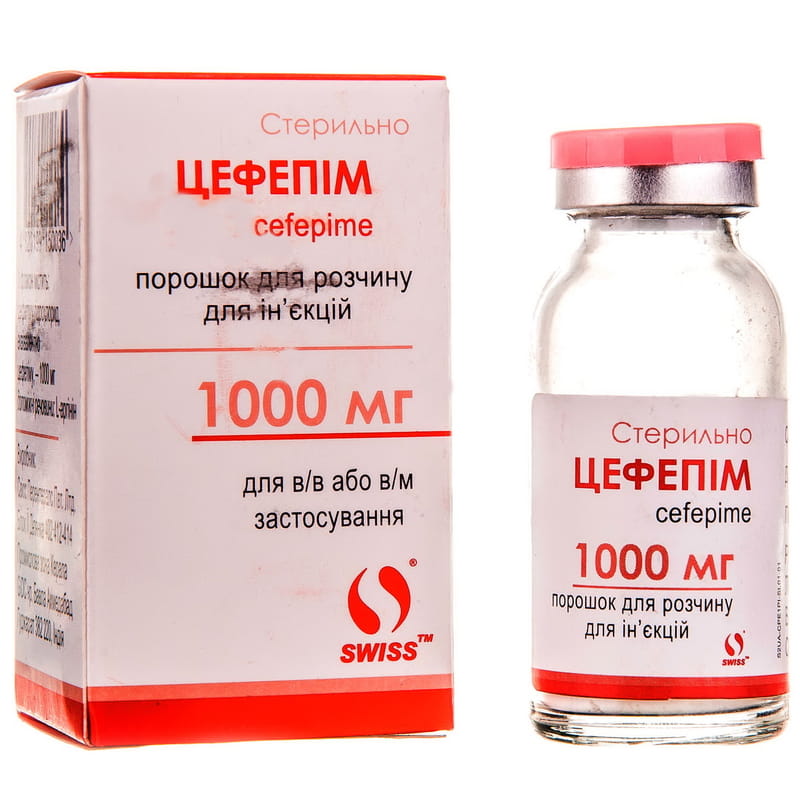
- Lower affinity for certain penicillin-binding enzymes
- Modified side chain structure for improved activity against staphylococci
- Zwitterionic properties enabling faster penetration of gram-negative cell walls
These features contribute to cefepime’s broader spectrum of activity, particularly against gram-negative bacteria, compared to third-generation cephalosporins.
Indications: When Is Cefepime the Right Choice?
Cefepime is indicated for the treatment of various bacterial infections caused by susceptible organisms. Its broad-spectrum activity makes it suitable for both empiric therapy and targeted treatment based on culture results. Common indications include:
- Pneumonia (hospital-acquired and community-acquired)
- Complicated and uncomplicated urinary tract infections
- Skin and soft tissue infections
- Complicated intra-abdominal infections (in combination with metronidazole)
- Empiric treatment for febrile neutropenia
Is cefepime effective against all bacteria? While it has a broad spectrum of activity, certain organisms may be resistant. Cefepime is particularly active against:
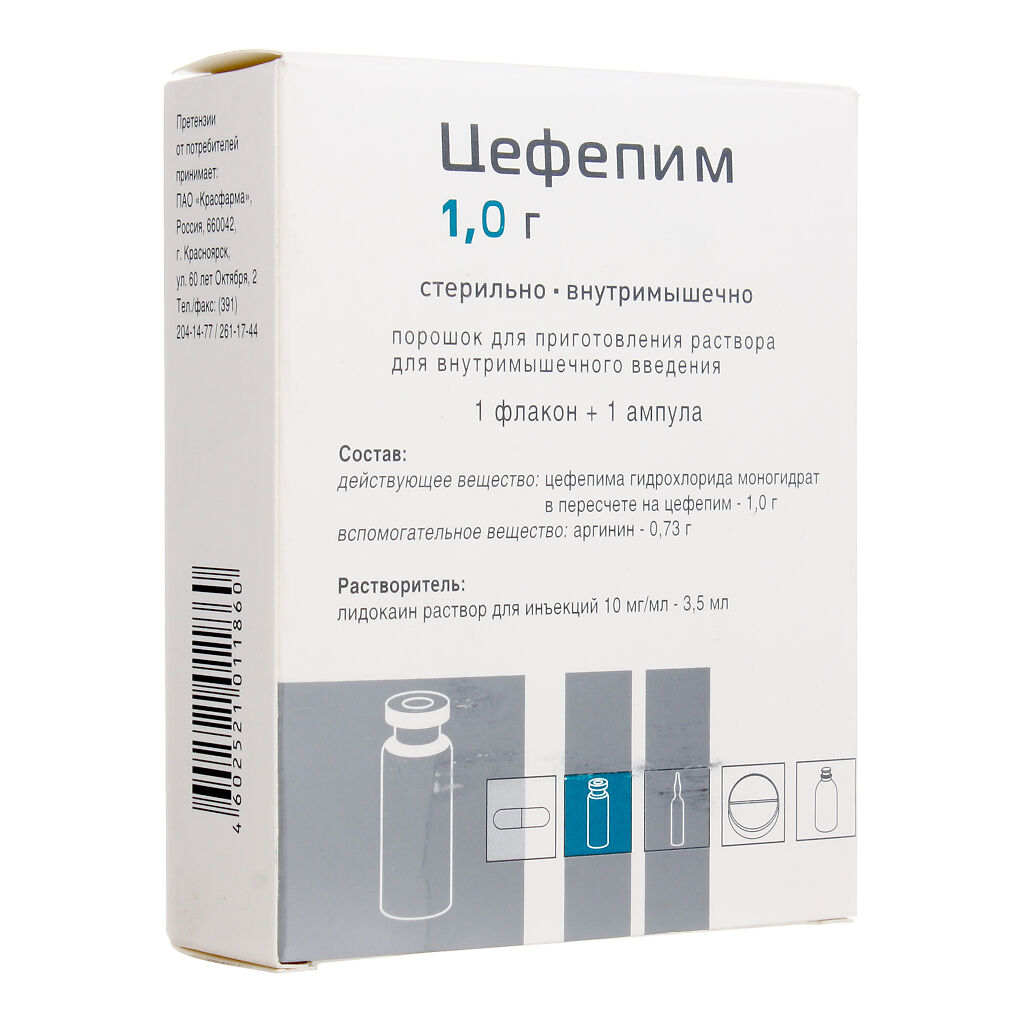
- Streptococcus pneumoniae
- Klebsiella pneumoniae
- Enterobacter species
- Haemophilus influenzae
- Pseudomonas aeruginosa
- Escherichia coli
- Proteus mirabilis
- Streptococcus pyogenes
- Methicillin-susceptible Staphylococcus aureus
- Viridans group streptococci
Administration and Dosing: Ensuring Optimal Efficacy
Cefepime is typically administered intravenously (IV) or intramuscularly (IM), as it is not well-absorbed orally. The most common route is IV infusion. How is cefepime typically dosed?
- Standard dosing: 1 to 2 g every 8 to 12 hours
- Infusion time: Usually over 30 minutes
- Extended infusions: Some studies have explored 4-hour infusions, with mixed results regarding clinical outcomes
Dosage forms available include:
- IV solution: 1 g / 50 mL, 2 g / 100 mL
- Injection powder for reconstitution: 500 mg, 1 g, 2 g vials
- IV solution for reconstitution: 1 g cefepime per 50 mL 5% dextrose
Dosing adjustments are necessary for patients with renal impairment, as cefepime is primarily eliminated through the kidneys.
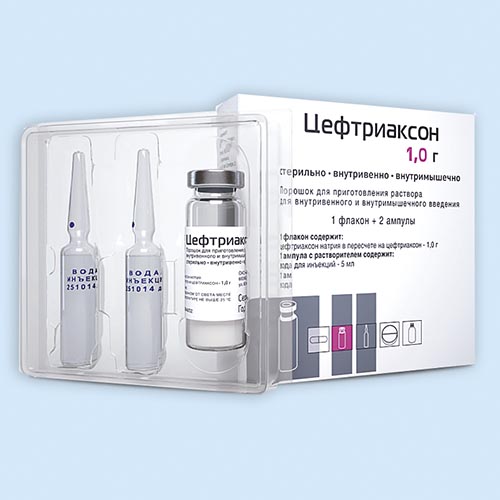
Pharmacokinetics: Understanding Cefepime’s Distribution and Elimination
Cefepime exhibits favorable pharmacokinetic properties that contribute to its clinical efficacy. How does cefepime distribute throughout the body?
- Wide distribution in body tissues and fluids
- Penetrates pleural fluid, synovial fluid, bones, cerebrospinal fluid, and breast milk
- Rapid metabolism with minimal (<10%) excretion of metabolites
- Primarily eliminated unchanged through glomerular filtration
- Half-life of approximately 2 to 2.3 hours in patients with normal renal function
The extensive tissue distribution of cefepime contributes to its effectiveness in treating various types of infections throughout the body.
Safety Profile: Potential Side Effects and Precautions
While cefepime is generally well-tolerated, it’s important to be aware of potential adverse effects and take necessary precautions. What are some common side effects of cefepime?
- Gastrointestinal disturbances (nausea, diarrhea)
- Headache
- Rash or allergic reactions
- Local reactions at injection site
More serious but rare adverse effects can include:
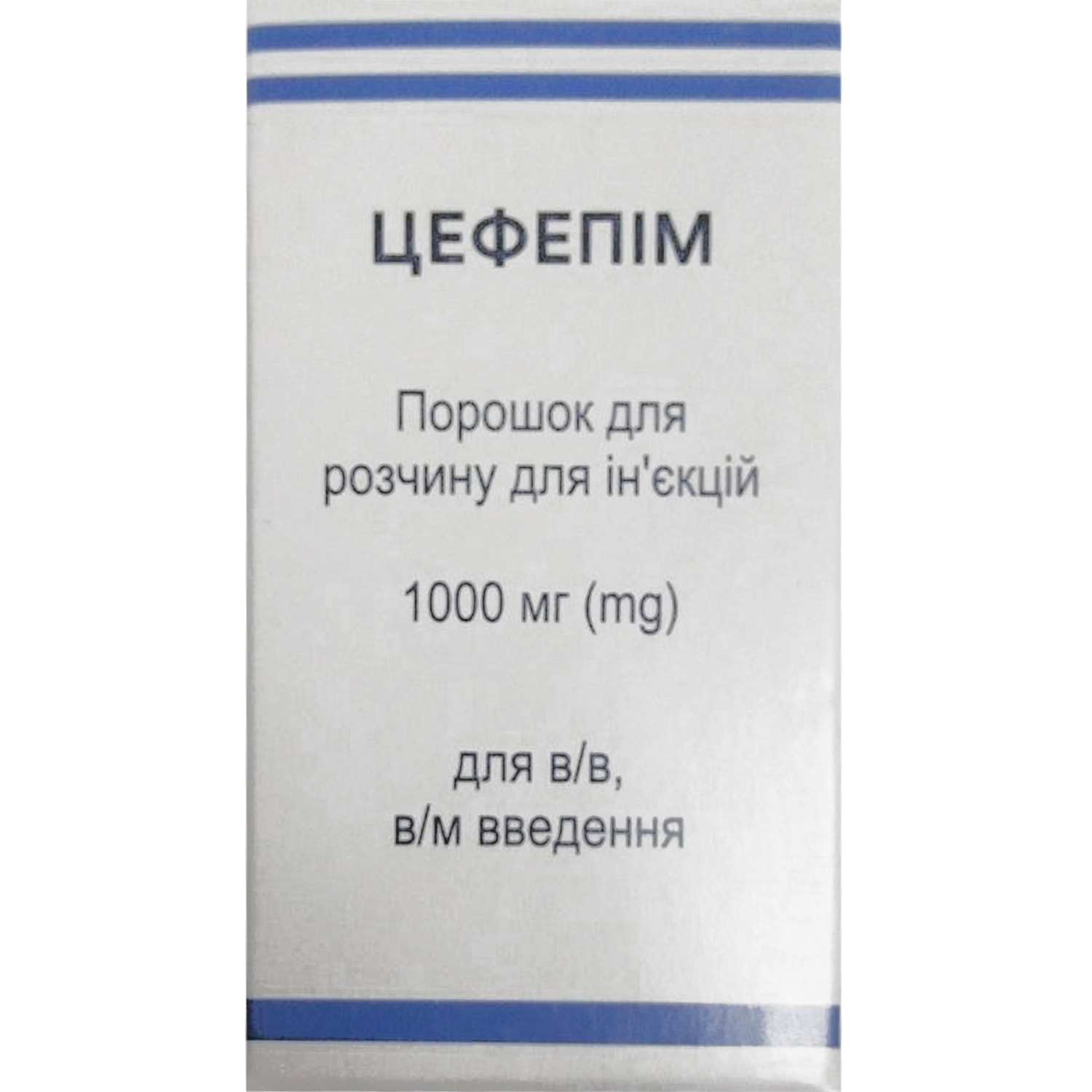
- Neurotoxicity (especially in patients with renal impairment)
- Severe allergic reactions (anaphylaxis)
- Clostridium difficile-associated diarrhea
Precautions should be taken in patients with a history of penicillin allergy, although cross-reactivity is less likely with cefepime due to its different chemical structure. Monitoring renal function and adjusting doses accordingly is crucial to minimize the risk of neurotoxicity.
Resistance Concerns: Cefepime and Extended-Spectrum Beta-Lactamases
The emergence of extended-spectrum beta-lactamase (ESBL) producing organisms poses a challenge to the efficacy of many beta-lactam antibiotics, including cefepime. How does cefepime fare against these resistant bacteria?
- Many ESBL organisms are resistant to cefepime
- A subgroup of ESBLs known as AmpC producers may remain susceptible to cefepime
- Careful evaluation of minimum inhibitory concentrations (MICs) is necessary when considering cefepime for ESBL infections
- Higher doses or extended infusions may be required for effective treatment of some ESBL organisms
The increasing prevalence of antibiotic resistance highlights the importance of judicious use of cefepime and other broad-spectrum antibiotics to preserve their effectiveness.
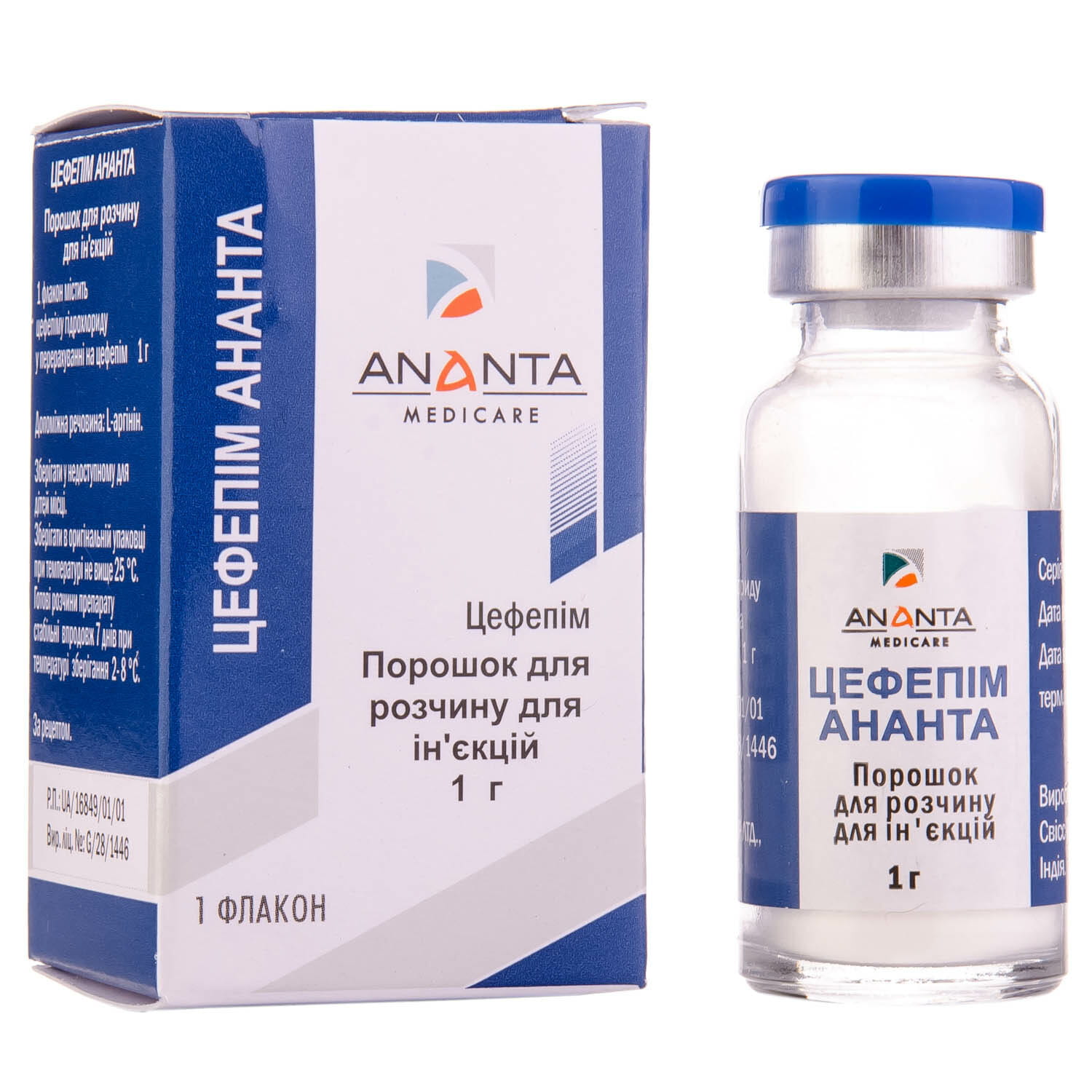
Clinical Applications: Optimizing Cefepime Use in Various Infections
Cefepime’s broad-spectrum activity makes it a valuable option for treating various bacterial infections. How is cefepime typically used in different clinical scenarios?
Pneumonia
Cefepime is effective against many common respiratory pathogens, including Streptococcus pneumoniae and Pseudomonas aeruginosa. It is often used as empiric therapy for hospital-acquired pneumonia or in combination with other agents for community-acquired pneumonia in severely ill patients.
Urinary Tract Infections
For complicated urinary tract infections caused by susceptible gram-negative organisms, cefepime provides excellent coverage. Its ability to achieve high urinary concentrations contributes to its efficacy in these infections.
Skin and Soft Tissue Infections
Cefepime’s activity against both gram-positive and gram-negative organisms makes it suitable for treating complicated skin and soft tissue infections, particularly those involving mixed bacterial flora.
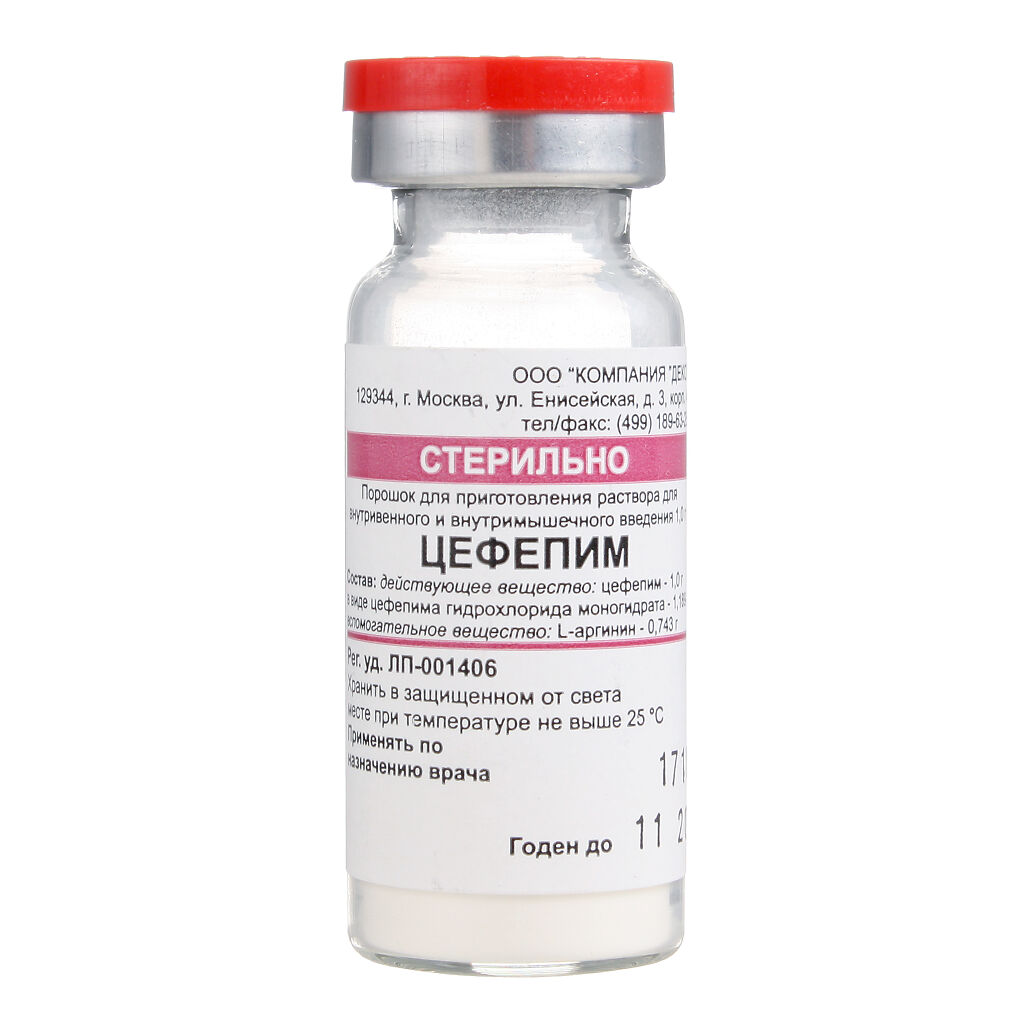
Febrile Neutropenia
The broad-spectrum coverage of cefepime, including its activity against Pseudomonas aeruginosa, makes it a valuable option for empiric therapy in febrile neutropenic patients. It is often used as monotherapy or in combination with other agents depending on local resistance patterns and patient risk factors.
Intra-abdominal Infections
When combined with metronidazole for anaerobic coverage, cefepime is effective for treating complicated intra-abdominal infections. This combination provides broad-spectrum activity against the polymicrobial flora typically encountered in these infections.
In all these clinical scenarios, the choice to use cefepime should be based on local antibiotic resistance patterns, patient-specific factors, and the severity of the infection. Appropriate de-escalation of therapy based on culture results is crucial to promote antimicrobial stewardship.
Comparing Cefepime to Other Antibiotics: Advantages and Limitations
Understanding how cefepime compares to other antibiotics can help guide appropriate treatment selection. What are some key comparisons?

Cefepime vs. Third-Generation Cephalosporins
Cefepime generally offers broader gram-negative coverage and improved stability against certain beta-lactamases compared to third-generation cephalosporins like ceftriaxone or ceftazidime. This makes cefepime a valuable option for treating infections caused by organisms that may be resistant to earlier generation cephalosporins.
Cefepime vs. Carbapenems
While carbapenems like meropenem have an even broader spectrum of activity, cefepime can be a carbapenem-sparing option for many infections. This is important for antimicrobial stewardship efforts aimed at preserving the effectiveness of carbapenems for the most severe infections.
Cefepime vs. Piperacillin-Tazobactam
Both cefepime and piperacillin-tazobactam offer broad-spectrum coverage, but cefepime may have an advantage in certain Pseudomonas aeruginosa infections. However, piperacillin-tazobactam provides better anaerobic coverage, which may be important in some polymicrobial infections.
The choice between these antibiotics often depends on the specific clinical scenario, local resistance patterns, and individual patient factors. In some cases, combination therapy may be necessary to provide optimal coverage.
Future Perspectives: Cefepime’s Role in the Era of Antibiotic Resistance
As antibiotic resistance continues to pose significant challenges in healthcare, what is the future outlook for cefepime?
- Ongoing research into optimal dosing strategies, including extended and continuous infusions, to maximize efficacy against resistant organisms
- Development of new beta-lactamase inhibitors that could potentially be combined with cefepime to extend its spectrum of activity
- Continued surveillance of resistance patterns to guide appropriate use and preserve effectiveness
- Integration of rapid diagnostic technologies to enable more targeted use of broad-spectrum agents like cefepime
While cefepime remains a valuable antibiotic in our current arsenal, its effectiveness may be challenged by evolving resistance mechanisms. Judicious use, guided by antimicrobial stewardship principles, will be crucial in preserving its utility for future patients.
Practical Considerations for Healthcare Providers
When prescribing or administering cefepime, healthcare providers should keep several important factors in mind:
- Assess renal function and adjust dosing accordingly to minimize the risk of neurotoxicity
- Consider local antibiogram data when selecting cefepime for empiric therapy
- Monitor for signs of allergic reactions, especially in patients with a history of penicillin allergy
- Be aware of the potential for Clostridium difficile infection, particularly with prolonged use
- Ensure appropriate de-escalation of therapy once culture results are available
- Consider therapeutic drug monitoring in critically ill patients or those with altered pharmacokinetics
By keeping these considerations in mind, healthcare providers can optimize the use of cefepime, maximizing its benefits while minimizing potential risks.
In conclusion, cefepime remains a valuable antibiotic in the treatment of various bacterial infections, particularly in hospitalized patients. Its broad-spectrum activity, favorable pharmacokinetic properties, and stability against certain beta-lactamases make it an important tool in our antimicrobial arsenal. However, judicious use and ongoing surveillance of resistance patterns are crucial to preserving its effectiveness in the face of evolving bacterial resistance mechanisms. As research continues to refine dosing strategies and explore potential combinations with new beta-lactamase inhibitors, cefepime is likely to continue playing a significant role in the management of serious bacterial infections.
Cefepime – StatPearls – NCBI Bookshelf
Continuing Education Activity
Cefepime is a cephalosporin in the beta-lactam class of antibiotics used to manage and treat gram-negative and gram-positive bacterial infections. This activity outlines the indications, mechanism of action, and contraindications for cefepime as a valuable agent in managing bacterial infections for hospitalized patients. This activity will highlight the mechanism of action, adverse effects, and other essential factors such as dosing and monitoring appropriate for all interprofessional team members when treating patients with cefepime.
Objectives:
Describe the mechanism of action of cefepime.
Review the chemical structures of cefepime vs. penicillin to explain why IgE mediated cross-reactivity reaction is unlikely.
Summarize the possible toxic effects that cefepime.
Outline interprofessional team approaches for improving care coordination for the safe use of cefepime that will reduce morbidity and improve patient safety.

Access free multiple choice questions on this topic.
Indications
Cefepime hydrochloride is a fourth-generation cephalosporin that belongs to a class of antibiotics known as beta-lactams. It is indicated to treat gram-positive and gram-negative bacterial infections that are susceptible to its activity. These include:[1][2]
Pneumonia
Complicated and uncomplicated urinary tract infections
Skin and soft tissue infections
Complicated intra-abdominal infections (with metronidazole)
Empiric treatment for neutropenic fever
Selections of bacteria susceptible to cefepime are as follows: Streptococcus pneumoniae, Klebsiella pneumoniae, Enterobacter group, Haemophilus influenza, Pseudomonas aeruginosa, Escherichia coli, Proteus mirabilis, Streptococcus pyogenes, methicillin-susceptible Staphylococcus aureus, Streptococci viridans species, Bacteroides fragilis.
An ever-growing number of bacteria are becoming resistant to the activity of beta-lactam, known as extended-spectrum beta-lactamase (ESBL) producing organisms. Many ESBL organisms are resistant to cefepime. However, there is a sub-group of ESBLs known as Amp-C producers that are susceptible. Although these organisms may be susceptible to cefepime, the minimum inhibitory concentration (MIC) and the dosing regimen must be carefully evaluated before treatment to ensure effective coverage.[3][4][5]
Many ESBL organisms are resistant to cefepime. However, there is a sub-group of ESBLs known as Amp-C producers that are susceptible. Although these organisms may be susceptible to cefepime, the minimum inhibitory concentration (MIC) and the dosing regimen must be carefully evaluated before treatment to ensure effective coverage.[3][4][5]
Mechanism of Action
Cefepime has a similar mechanism of action to other beta-lactams. Cefepime inhibits bacterial cell wall synthesis by covalently binding enzymes responsible for the final step in transpeptidation during peptidoglycan wall synthesis. This binding causes defects in the cell wall leading to autolysis and subsequent death of the organism.
Cefepime has increased gram-negative coverage and is more stable against beta-lactamases when compared to third-generation cephalosporins due to a few mechanisms. One such mechanism is that penicillin-binding enzymes have a lower affinity for cefepime. Another is the chemical structure differs from older generations with a substitution of a side chain, lending it more activity against staphylococcal species. Cefepime is also a zwitterion giving it an advantage for faster cell wall penetration of gram-negative bacteria, which is why it has broader gram-negative coverage than the third-generation.
Cefepime is also a zwitterion giving it an advantage for faster cell wall penetration of gram-negative bacteria, which is why it has broader gram-negative coverage than the third-generation.
Cefepime, like most cephalosporins, is widely distributed throughout body tissue and fluids, including pleural fluid, synovial fluid, bones, cerebral spinal fluid, and breast milk. Cefepime rapidly metabolizes with less than 10% of the metabolized product undergoing excretion. The remaining compound gets excreted through glomerular filtration as an unchanged drug. The half-life is about 2 to 2.3 hours and is longer in patients with renal failure.[1][6]
Administration
Dosage Forms
Intravenous solution as cefepime hydrochloride: 1 g / 50 mL (50 mL), 2 g / 100 mL (100 mL)
Injection powder for reconstitution as cefepime hydrochloride: 500 mg (each vial), 1 g (each vial), 2 (each vial)
Intravenous, Solution for reconstitution, as cefepime hydrochloride: 1 gm cefepime per 50 ml ( 5% w/v ) dextrose USP in water for injection
Dosing
Cefepime is not well absorbed by the gastrointestinal tract and must be administered intravenously (IV) or intramuscularly (IM). The most common method is by IV — typical administration is 1 to 2 g every 8 to 12 hours depending on the infection treated. Infusions are usually administered over 30 minutes. Studies have looked at extended infusions of 4 hours, showing lower overall mortality and reduced intensive care unit (ICU) lengths of stay compared with the standard 30-minute rate; however, other studies have failed to confirm these findings. Extended infusion rates for febrile neutropenia have been studied and appear feasible for treatment.
The most common method is by IV — typical administration is 1 to 2 g every 8 to 12 hours depending on the infection treated. Infusions are usually administered over 30 minutes. Studies have looked at extended infusions of 4 hours, showing lower overall mortality and reduced intensive care unit (ICU) lengths of stay compared with the standard 30-minute rate; however, other studies have failed to confirm these findings. Extended infusion rates for febrile neutropenia have been studied and appear feasible for treatment.
Table
Urinary Tract Infections: Mild / Moderate, Uncomplicated / Complicated Urinary Tract Infections: Severe, Uncomplicated / Complicated
Specific Patient Population
Pediatric Patients: Pediatric administration is usually 50 mg/kg (up to a 40 kg child) every 8 to 12 hours.
Hepatic Impairment: No adjustment in dosing is necessary for hepatic impairment.
Renal Impairment: The dose requires adjustment for patients with renal dysfunction, defined as a creatinine clearance less than or equal to 60 mL/min. Either daily dose is reduced, or dose is given at extended intervals for these patients.[7][8][9]
Either daily dose is reduced, or dose is given at extended intervals for these patients.[7][8][9]
Pregnancy/Breastfeeding Implications: Cefepime is listed as pregnancy category B medicine, and it gets excreted in breast milk. Caution is necessary with cefepime in pregnant or breastfeeding women and should only be used if absolutely needed.[1]
Adverse Effects
Cefepime is usually well tolerated by both adults and pediatric patients. The most common adverse effects in adults are diarrhea and rash. The most common adverse effects in the pediatric population are fevers, diarrhea, and rash.
There are multitudes of other less common adverse effects listed according to the system affected:
Neurological: headache, fever, and neurotoxicity
Gastrointestinal: nausea, vomiting, abdominal pain, hepatic injury, colitis including pseudomembranous colitis, oral candidiasis
Genitourinary: vaginitis, renal injury
Dermatological: local site injection irritation, pruritus, urticaria, Stevens-Johnson syndrome, and erythema multiforme
Hematological: positive Coombs test without hemolysis, pancytopenia, and anaplastic anemia
Adverse effects typically reverse upon removal of the medication.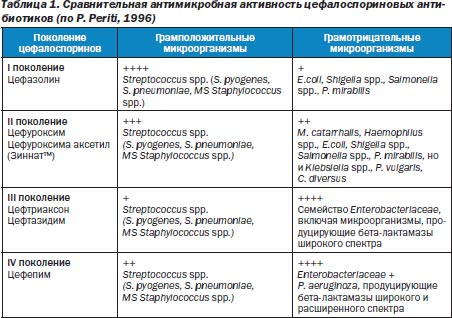
Neurotoxicity is a serious, life-threatening adverse effect that deserves special mention. Symptoms can present as altered mental status, encephalopathy, seizures, myoclonus, hallucinations, coma, and stroke-like symptoms. The onset of symptoms is typically four days after starting cefepime. Risk factors include renal failure (creatinine less than or equal to 60 mL/min), the aging adult, critically ill patients in ICU, strokes, Alzheimer disease, brain malignancy, seizure history, and a compromised blood-brain barrier (BBB). The theorized mechanism is that cefepime can cross the BBB and antagonize gamma-aminobutyric acid receptors.[10][11]
Treatment consists of stopping the drug, seizure management with benzodiazepines, or renal replacement therapy in severe refractory cases. It is important to monitor and adjust dosing with renal dysfunction; however, reports exist of neurotoxicity in patients with normal kidney function.[12][13][14]
Drug Interactions: Significant drug interaction exists when using cefepime. Concurrent use of cefepime with other aminoglycoside antibiotics increases the risk of cytotoxicity and nephrotoxicity. Concurrent use of cephalosporins (cefepime) and potent diuretics (e.g., furosemide) can result in nephrotoxicity. Monitor renal function when these medicines are administered to the patient.
Concurrent use of cefepime with other aminoglycoside antibiotics increases the risk of cytotoxicity and nephrotoxicity. Concurrent use of cephalosporins (cefepime) and potent diuretics (e.g., furosemide) can result in nephrotoxicity. Monitor renal function when these medicines are administered to the patient.
Contraindications
Cefepime is contraindicated in patients with prior hypersensitivity reactions to the drug in the past.
Cephalosporins have a long history of being contraindicated in patients with severe hypersensitivity reactions to penicillin. Early testing of cephalosporins (up until the 1980s) came from the Penicillium mold of penicillin. The thinking is that these early cephalosporins were contaminated with penicillin and accounted for cross-reactivity allergic response. Thus, avoiding cephalosporins in patients with penicillin allergies likely developed from these early studies.[15][16]
Cephalosporins are similar to penicillins with the beta-lactam ring but differ by the various side chains. The similarities of these side chains to the penicillin structure account for the IgE mediated cross-reactivity and not the beta-lactam ring, as previously thought. The newer the generation of cephalosporins have, the greater difference in the side chain structures. A severe IgE mediated hypersensitivity reaction to cefepime in a penicillin-allergic patient is rare. It is worth mentioning that the delayed T-cell hypersensitivity reactions can still occur because T-cells can recognize the entire beta-lactam ring and the side chains.[17][18]
The similarities of these side chains to the penicillin structure account for the IgE mediated cross-reactivity and not the beta-lactam ring, as previously thought. The newer the generation of cephalosporins have, the greater difference in the side chain structures. A severe IgE mediated hypersensitivity reaction to cefepime in a penicillin-allergic patient is rare. It is worth mentioning that the delayed T-cell hypersensitivity reactions can still occur because T-cells can recognize the entire beta-lactam ring and the side chains.[17][18]
Caution is advisable with use in patients with compromised renal function (creatinine clearance less than or equal to 60 mL/min) as roughly 85% of the drug is excreted through the urine unchanged. Caution is necessary with cefepime in pregnant or breastfeeding women and should only be used if the benefits outweigh the risks.[1]
Monitoring
It is essential to monitor every patient for signs of a hypersensitivity reaction, especially if they have reacted to other beta-lactams in the past. In addition, since cefepime is often used empirically for broad-spectrum coverage, the culture sensitivities should have close monitoring to deescalate treatment to a narrow-spectrum antibiotic.
In addition, since cefepime is often used empirically for broad-spectrum coverage, the culture sensitivities should have close monitoring to deescalate treatment to a narrow-spectrum antibiotic.
Renal function should be monitored with blood urea nitrogen and serum creatinine, especially when administering to the aging adult or patients with pre-existing kidney dysfunction. In addition, it is essential to monitor for signs of neurological changes, particularly in the elderly, patients with renal dysfunction, and patients with febrile neutropenia.
The effectiveness of cefepime can vary drastically with critically ill patients treated in the intensive care unit. Drug monitoring is suggested if the patient’s creatinine clearance is less than or equal to 50 mL/min or if the minimum inhibitory concentration (MIC) for the given pathogen is greater or equal to 4 mg/L. If treating outside of these parameters, then dose adjustment is indicated.[19][20][21]
Toxicity
In the event of a suspected overdose, the clinician should discontinue the drug or adjust the dose. Determining if the symptoms result from an actual cefepime overdose or preexisting comorbidities may be difficult. If suspicion is high or symptoms do not subside after dose adjusting or discontinuing, blood and/or cerebral spinal fluid levels should be obtained to evaluate if the toxicity stems from elevated cefepime levels. Dialysis may be necessary in severe cases.
Determining if the symptoms result from an actual cefepime overdose or preexisting comorbidities may be difficult. If suspicion is high or symptoms do not subside after dose adjusting or discontinuing, blood and/or cerebral spinal fluid levels should be obtained to evaluate if the toxicity stems from elevated cefepime levels. Dialysis may be necessary in severe cases.
Enhancing Healthcare Team Outcomes
Cefepime is a common antibiotic prescribed in the hospital setting. It is often prescribed empirically to septic patients before a pathogen is known, as it covers a broad spectrum of gram-positive and gram-negative bacteria. Therefore, all members of the health care team must monitor each patient for immediate hypersensitivity reactions after initial administration.
Clinicians need to bear in mind that the drug’s pharmacokinetics can undergo alteration in patients with sepsis, renal dysfunction, or the older person leading to undesired peaks and troughs and potentially serious adverse effects. For example, if a patient exhibits a change in mental status or develops neurological signs such as seizure activity, the offending agent might be cefepime, and discontinuation or dose adjustment may be necessary. These changes are more likely to occur in patients with sepsis or renal dysfunction and the aging adult. However, cefepime can be overlooked as a possible source as it is a common medication given that is usually well tolerated.
For example, if a patient exhibits a change in mental status or develops neurological signs such as seizure activity, the offending agent might be cefepime, and discontinuation or dose adjustment may be necessary. These changes are more likely to occur in patients with sepsis or renal dysfunction and the aging adult. However, cefepime can be overlooked as a possible source as it is a common medication given that is usually well tolerated.
The clinician will decide to treat the patient with cefepime, but a consult with a pharmacist, particularly one with board certification in infectious disease, might be in order. Pharmacists can review the antibiogram and verify dosing and duration. Nursing can counsel the patient on taking the medication, answering any questions, monitoring patient compliance and therapeutic effectiveness, and reporting any concerns to the prescriber. Cefepime therapy requires the collaborative effort of an interprofessional healthcare team to include physicians, specialty-trained nurses, pharmacists, and potentially infectious disease specialists, all working together to achieve optimal patient outcomes. [Level 5]
[Level 5]
Review Questions
Access free multiple choice questions on this topic.
Comment on this article.
References
- 1.
Chapman TM, Perry CM. Cefepime: a review of its use in the management of hospitalized patients with pneumonia. Am J Respir Med. 2003;2(1):75-107. [PubMed: 14720024]
- 2.
Rivera CG, Narayanan PP, Patel R, Estes LL. Impact of Cefepime Susceptible-Dose-Dependent MIC for Enterobacteriaceae on Reporting and Prescribing. Antimicrob Agents Chemother. 2016 Jun;60(6):3854-5. [PMC free article: PMC4879407] [PubMed: 27067319]
- 3.
Nguyen HM, Shier KL, Graber CJ. Determining a clinical framework for use of cefepime and β-lactam/β-lactamase inhibitors in the treatment of infections caused by extended-spectrum-β-lactamase-producing Enterobacteriaceae. J Antimicrob Chemother. 2014 Apr;69(4):871-80. [PubMed: 24265230]
- 4.
Patel HB, Lusk KA, Cota JM.
 The Role of Cefepime in the Treatment of Extended-Spectrum Beta-Lactamase Infections. J Pharm Pract. 2019 Aug;32(4):458-463. [PubMed: 29166830]
The Role of Cefepime in the Treatment of Extended-Spectrum Beta-Lactamase Infections. J Pharm Pract. 2019 Aug;32(4):458-463. [PubMed: 29166830]- 5.
Walker KJ, Lee YR, Klar AR. Clinical Outcomes of Extended-Spectrum Beta-Lactamase-Producing Enterobacteriaceae Infections with Susceptibilities among Levofloxacin, Cefepime, and Carbapenems. Can J Infect Dis Med Microbiol. 2018;2018:3747521. [PMC free article: PMC5833881] [PubMed: 29670677]
- 6.
Kessler RE. Cefepime microbiologic profile and update. Pediatr Infect Dis J. 2001 Mar;20(3):331-6. [PubMed: 11303846]
- 7.
Bauer KA, West JE, O’Brien JM, Goff DA. Extended-infusion cefepime reduces mortality in patients with Pseudomonas aeruginosa infections. Antimicrob Agents Chemother. 2013 Jul;57(7):2907-12. [PMC free article: PMC3697364] [PubMed: 23571547]
- 8.
Wrenn RH, Cluck D, Kennedy L, Ohl C, Williamson JC. Extended infusion compared to standard infusion cefepime as empiric treatment of febrile neutropenia.
 J Oncol Pharm Pract. 2018 Apr;24(3):170-175. [PubMed: 28077047]
J Oncol Pharm Pract. 2018 Apr;24(3):170-175. [PubMed: 28077047]- 9.
Zhu LL, Zhou Q. Optimal infusion rate in antimicrobial therapy explosion of evidence in the last five years. Infect Drug Resist. 2018;11:1105-1117. [PMC free article: PMC6089111] [PubMed: 30127628]
- 10.
Payne LE, Gagnon DJ, Riker RR, Seder DB, Glisic EK, Morris JG, Fraser GL. Cefepime-induced neurotoxicity: a systematic review. Crit Care. 2017 Nov 14;21(1):276. [PMC free article: PMC5686900] [PubMed: 29137682]
- 11.
Deshayes S, Coquerel A, Verdon R. Neurological Adverse Effects Attributable to β-Lactam Antibiotics: A Literature Review. Drug Saf. 2017 Dec;40(12):1171-1198. [PubMed: 28755095]
- 12.
Huwyler T, Lenggenhager L, Abbas M, Ing Lorenzini K, Hughes S, Huttner B, Karmime A, Uçkay I, von Dach E, Lescuyer P, Harbarth S, Huttner A. Cefepime plasma concentrations and clinical toxicity: a retrospective cohort study. Clin Microbiol Infect.
 2017 Jul;23(7):454-459. [PubMed: 28111294]
2017 Jul;23(7):454-459. [PubMed: 28111294]- 13.
Isitan C, Ferree A, Hohler AD. Cefepime induced neurotoxicity: A case series and review of the literature. eNeurologicalSci. 2017 Sep;8:40-43. [PMC free article: PMC5730896] [PubMed: 29260037]
- 14.
Appa AA, Jain R, Rakita RM, Hakimian S, Pottinger PS. Characterizing Cefepime Neurotoxicity: A Systematic Review. Open Forum Infect Dis. 2017 Fall;4(4):ofx170. [PMC free article: PMC5639733] [PubMed: 29071284]
- 15.
Vorobeichik L, Weber EA, Tarshis J. Misconceptions Surrounding Penicillin Allergy: Implications for Anesthesiologists. Anesth Analg. 2018 Sep;127(3):642-649. [PubMed: 29757781]
- 16.
Pichichero ME, Zagursky R. Penicillin and cephalosporin allergy. Ann Allergy Asthma Immunol. 2014 May;112(5):404-12. [PubMed: 24767695]
- 17.
Mine Y, Nishida M, Goto S, Kuwahara S. Cefazolin, a new semisynthetic cephalosporin antibiotic. IV. Antigenicity of cefazolin and its cross reactivity with benzylpenicillin, ampicillin and cephaloridine.
 J Antibiot (Tokyo). 1970 Apr;23(4):195-203. [PubMed: 5429508]
J Antibiot (Tokyo). 1970 Apr;23(4):195-203. [PubMed: 5429508]- 18.
Joint Task Force on Practice Parameters; American Academy of Allergy, Asthma and Immunology; American College of Allergy, Asthma and Immunology; Joint Council of Allergy, Asthma and Immunology. Drug allergy: an updated practice parameter. Ann Allergy Asthma Immunol. 2010 Oct;105(4):259-273. [PubMed: 20934625]
- 19.
Durand-Maugard C, Lemaire-Hurtel AS, Gras-Champel V, Hary L, Maizel J, Prud’homme-Bernardy A, Andréjak C, Andréjak M. Blood and CSF monitoring of cefepime-induced neurotoxicity: nine case reports. J Antimicrob Chemother. 2012 May;67(5):1297-9. [PubMed: 22298349]
- 20.
Lamoth F, Buclin T, Pascual A, Vora S, Bolay S, Decosterd LA, Calandra T, Marchetti O. High cefepime plasma concentrations and neurological toxicity in febrile neutropenic patients with mild impairment of renal function. Antimicrob Agents Chemother. 2010 Oct;54(10):4360-7. [PMC free article: PMC2944571] [PubMed: 20625153]
- 21.

Chapuis TM, Giannoni E, Majcherczyk PA, Chioléro R, Schaller MD, Berger MM, Bolay S, Décosterd LA, Bugnon D, Moreillon P. Prospective monitoring of cefepime in intensive care unit adult patients. Crit Care. 2010;14(2):R51. [PMC free article: PMC2887166] [PubMed: 20359352]
- 22.
Endimiani A, Perez F, Bonomo RA. Cefepime: a reappraisal in an era of increasing antimicrobial resistance. Expert Rev Anti Infect Ther. 2008 Dec;6(6):805-24. [PMC free article: PMC2633657] [PubMed: 19053894]
Disclosure: Audrey O’Connor declares no relevant financial relationships with ineligible companies.
Disclosure: Michael Lopez declares no relevant financial relationships with ineligible companies.
Disclosure: Ambika Eranki declares no relevant financial relationships with ineligible companies.
Cefepime – StatPearls – NCBI Bookshelf
Continuing Education Activity
Cefepime is a cephalosporin in the beta-lactam class of antibiotics used to manage and treat gram-negative and gram-positive bacterial infections. This activity outlines the indications, mechanism of action, and contraindications for cefepime as a valuable agent in managing bacterial infections for hospitalized patients. This activity will highlight the mechanism of action, adverse effects, and other essential factors such as dosing and monitoring appropriate for all interprofessional team members when treating patients with cefepime.
This activity outlines the indications, mechanism of action, and contraindications for cefepime as a valuable agent in managing bacterial infections for hospitalized patients. This activity will highlight the mechanism of action, adverse effects, and other essential factors such as dosing and monitoring appropriate for all interprofessional team members when treating patients with cefepime.
Objectives:
Describe the mechanism of action of cefepime.
Review the chemical structures of cefepime vs. penicillin to explain why IgE mediated cross-reactivity reaction is unlikely.
Summarize the possible toxic effects that cefepime.
Outline interprofessional team approaches for improving care coordination for the safe use of cefepime that will reduce morbidity and improve patient safety.
Access free multiple choice questions on this topic.
Indications
Cefepime hydrochloride is a fourth-generation cephalosporin that belongs to a class of antibiotics known as beta-lactams. It is indicated to treat gram-positive and gram-negative bacterial infections that are susceptible to its activity. These include:[1][2]
It is indicated to treat gram-positive and gram-negative bacterial infections that are susceptible to its activity. These include:[1][2]
Pneumonia
Complicated and uncomplicated urinary tract infections
Skin and soft tissue infections
Complicated intra-abdominal infections (with metronidazole)
Empiric treatment for neutropenic fever
Selections of bacteria susceptible to cefepime are as follows: Streptococcus pneumoniae, Klebsiella pneumoniae, Enterobacter group, Haemophilus influenza, Pseudomonas aeruginosa, Escherichia coli, Proteus mirabilis, Streptococcus pyogenes, methicillin-susceptible Staphylococcus aureus, Streptococci viridans species, Bacteroides fragilis.
An ever-growing number of bacteria are becoming resistant to the activity of beta-lactam, known as extended-spectrum beta-lactamase (ESBL) producing organisms. Many ESBL organisms are resistant to cefepime. However, there is a sub-group of ESBLs known as Amp-C producers that are susceptible. Although these organisms may be susceptible to cefepime, the minimum inhibitory concentration (MIC) and the dosing regimen must be carefully evaluated before treatment to ensure effective coverage.[3][4][5]
Although these organisms may be susceptible to cefepime, the minimum inhibitory concentration (MIC) and the dosing regimen must be carefully evaluated before treatment to ensure effective coverage.[3][4][5]
Mechanism of Action
Cefepime has a similar mechanism of action to other beta-lactams. Cefepime inhibits bacterial cell wall synthesis by covalently binding enzymes responsible for the final step in transpeptidation during peptidoglycan wall synthesis. This binding causes defects in the cell wall leading to autolysis and subsequent death of the organism.
Cefepime has increased gram-negative coverage and is more stable against beta-lactamases when compared to third-generation cephalosporins due to a few mechanisms. One such mechanism is that penicillin-binding enzymes have a lower affinity for cefepime. Another is the chemical structure differs from older generations with a substitution of a side chain, lending it more activity against staphylococcal species. Cefepime is also a zwitterion giving it an advantage for faster cell wall penetration of gram-negative bacteria, which is why it has broader gram-negative coverage than the third-generation.
Cefepime, like most cephalosporins, is widely distributed throughout body tissue and fluids, including pleural fluid, synovial fluid, bones, cerebral spinal fluid, and breast milk. Cefepime rapidly metabolizes with less than 10% of the metabolized product undergoing excretion. The remaining compound gets excreted through glomerular filtration as an unchanged drug. The half-life is about 2 to 2.3 hours and is longer in patients with renal failure.[1][6]
Administration
Dosage Forms
Intravenous solution as cefepime hydrochloride: 1 g / 50 mL (50 mL), 2 g / 100 mL (100 mL)
Injection powder for reconstitution as cefepime hydrochloride: 500 mg (each vial), 1 g (each vial), 2 (each vial)
Intravenous, Solution for reconstitution, as cefepime hydrochloride: 1 gm cefepime per 50 ml ( 5% w/v ) dextrose USP in water for injection
Dosing
Cefepime is not well absorbed by the gastrointestinal tract and must be administered intravenously (IV) or intramuscularly (IM). The most common method is by IV — typical administration is 1 to 2 g every 8 to 12 hours depending on the infection treated. Infusions are usually administered over 30 minutes. Studies have looked at extended infusions of 4 hours, showing lower overall mortality and reduced intensive care unit (ICU) lengths of stay compared with the standard 30-minute rate; however, other studies have failed to confirm these findings. Extended infusion rates for febrile neutropenia have been studied and appear feasible for treatment.
The most common method is by IV — typical administration is 1 to 2 g every 8 to 12 hours depending on the infection treated. Infusions are usually administered over 30 minutes. Studies have looked at extended infusions of 4 hours, showing lower overall mortality and reduced intensive care unit (ICU) lengths of stay compared with the standard 30-minute rate; however, other studies have failed to confirm these findings. Extended infusion rates for febrile neutropenia have been studied and appear feasible for treatment.
Table
Urinary Tract Infections: Mild / Moderate, Uncomplicated / Complicated Urinary Tract Infections: Severe, Uncomplicated / Complicated
Specific Patient Population
Pediatric Patients: Pediatric administration is usually 50 mg/kg (up to a 40 kg child) every 8 to 12 hours.
Hepatic Impairment: No adjustment in dosing is necessary for hepatic impairment.
Renal Impairment: The dose requires adjustment for patients with renal dysfunction, defined as a creatinine clearance less than or equal to 60 mL/min. Either daily dose is reduced, or dose is given at extended intervals for these patients.[7][8][9]
Either daily dose is reduced, or dose is given at extended intervals for these patients.[7][8][9]
Pregnancy/Breastfeeding Implications: Cefepime is listed as pregnancy category B medicine, and it gets excreted in breast milk. Caution is necessary with cefepime in pregnant or breastfeeding women and should only be used if absolutely needed.[1]
Adverse Effects
Cefepime is usually well tolerated by both adults and pediatric patients. The most common adverse effects in adults are diarrhea and rash. The most common adverse effects in the pediatric population are fevers, diarrhea, and rash.
There are multitudes of other less common adverse effects listed according to the system affected:
Neurological: headache, fever, and neurotoxicity
Gastrointestinal: nausea, vomiting, abdominal pain, hepatic injury, colitis including pseudomembranous colitis, oral candidiasis
Genitourinary: vaginitis, renal injury
Dermatological: local site injection irritation, pruritus, urticaria, Stevens-Johnson syndrome, and erythema multiforme
Hematological: positive Coombs test without hemolysis, pancytopenia, and anaplastic anemia
Adverse effects typically reverse upon removal of the medication.
Neurotoxicity is a serious, life-threatening adverse effect that deserves special mention. Symptoms can present as altered mental status, encephalopathy, seizures, myoclonus, hallucinations, coma, and stroke-like symptoms. The onset of symptoms is typically four days after starting cefepime. Risk factors include renal failure (creatinine less than or equal to 60 mL/min), the aging adult, critically ill patients in ICU, strokes, Alzheimer disease, brain malignancy, seizure history, and a compromised blood-brain barrier (BBB). The theorized mechanism is that cefepime can cross the BBB and antagonize gamma-aminobutyric acid receptors.[10][11]
Treatment consists of stopping the drug, seizure management with benzodiazepines, or renal replacement therapy in severe refractory cases. It is important to monitor and adjust dosing with renal dysfunction; however, reports exist of neurotoxicity in patients with normal kidney function.[12][13][14]
Drug Interactions: Significant drug interaction exists when using cefepime.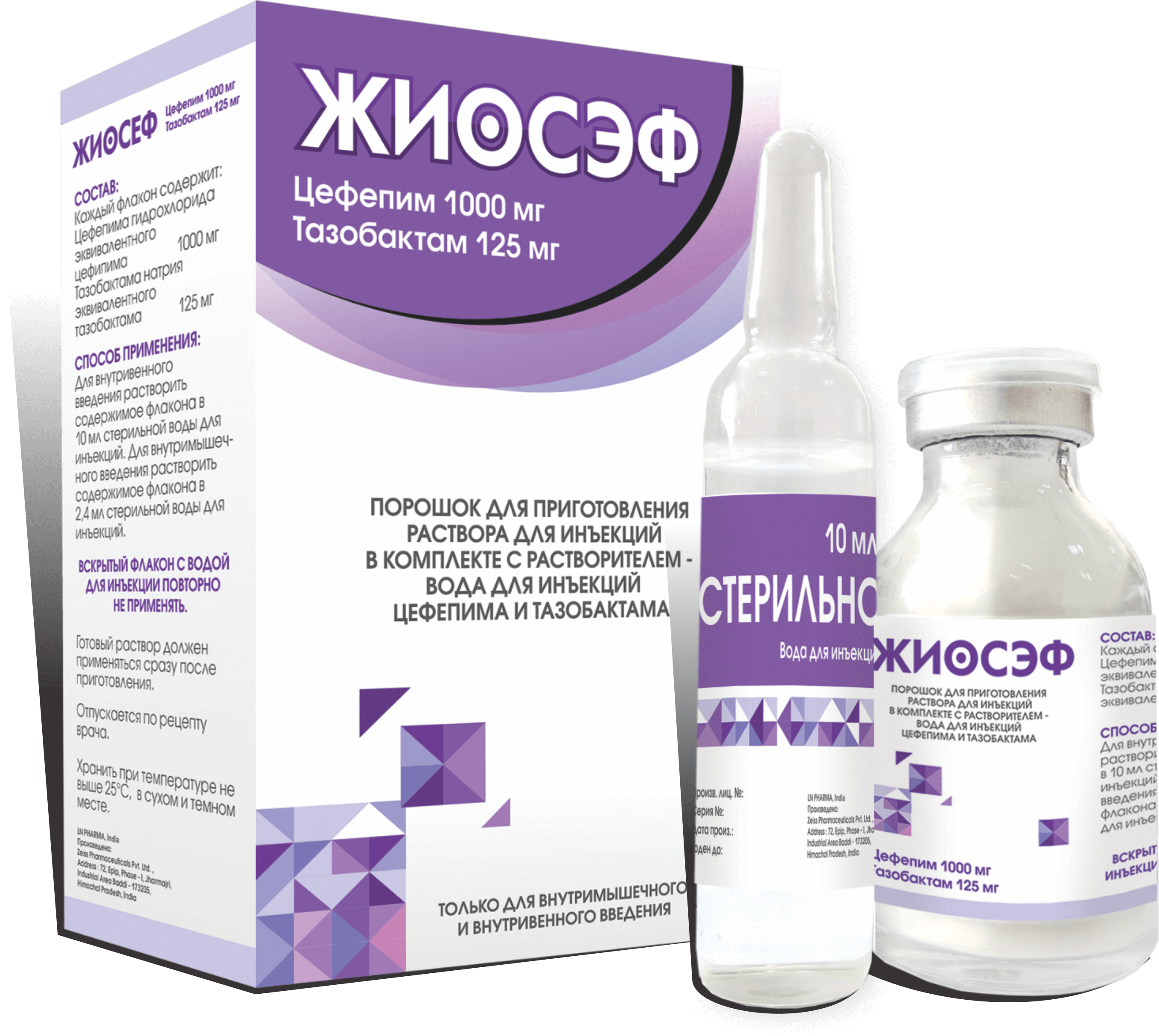 Concurrent use of cefepime with other aminoglycoside antibiotics increases the risk of cytotoxicity and nephrotoxicity. Concurrent use of cephalosporins (cefepime) and potent diuretics (e.g., furosemide) can result in nephrotoxicity. Monitor renal function when these medicines are administered to the patient.
Concurrent use of cefepime with other aminoglycoside antibiotics increases the risk of cytotoxicity and nephrotoxicity. Concurrent use of cephalosporins (cefepime) and potent diuretics (e.g., furosemide) can result in nephrotoxicity. Monitor renal function when these medicines are administered to the patient.
Contraindications
Cefepime is contraindicated in patients with prior hypersensitivity reactions to the drug in the past.
Cephalosporins have a long history of being contraindicated in patients with severe hypersensitivity reactions to penicillin. Early testing of cephalosporins (up until the 1980s) came from the Penicillium mold of penicillin. The thinking is that these early cephalosporins were contaminated with penicillin and accounted for cross-reactivity allergic response. Thus, avoiding cephalosporins in patients with penicillin allergies likely developed from these early studies.[15][16]
Cephalosporins are similar to penicillins with the beta-lactam ring but differ by the various side chains. The similarities of these side chains to the penicillin structure account for the IgE mediated cross-reactivity and not the beta-lactam ring, as previously thought. The newer the generation of cephalosporins have, the greater difference in the side chain structures. A severe IgE mediated hypersensitivity reaction to cefepime in a penicillin-allergic patient is rare. It is worth mentioning that the delayed T-cell hypersensitivity reactions can still occur because T-cells can recognize the entire beta-lactam ring and the side chains.[17][18]
The similarities of these side chains to the penicillin structure account for the IgE mediated cross-reactivity and not the beta-lactam ring, as previously thought. The newer the generation of cephalosporins have, the greater difference in the side chain structures. A severe IgE mediated hypersensitivity reaction to cefepime in a penicillin-allergic patient is rare. It is worth mentioning that the delayed T-cell hypersensitivity reactions can still occur because T-cells can recognize the entire beta-lactam ring and the side chains.[17][18]
Caution is advisable with use in patients with compromised renal function (creatinine clearance less than or equal to 60 mL/min) as roughly 85% of the drug is excreted through the urine unchanged. Caution is necessary with cefepime in pregnant or breastfeeding women and should only be used if the benefits outweigh the risks.[1]
Monitoring
It is essential to monitor every patient for signs of a hypersensitivity reaction, especially if they have reacted to other beta-lactams in the past.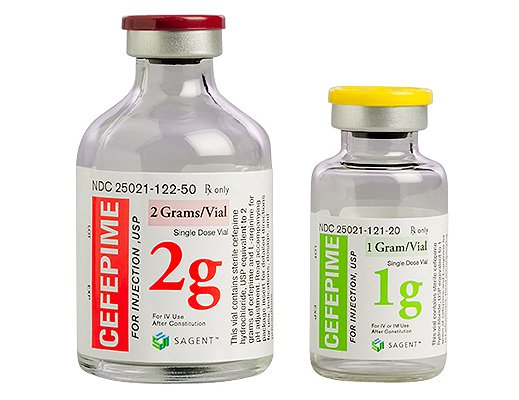 In addition, since cefepime is often used empirically for broad-spectrum coverage, the culture sensitivities should have close monitoring to deescalate treatment to a narrow-spectrum antibiotic.
In addition, since cefepime is often used empirically for broad-spectrum coverage, the culture sensitivities should have close monitoring to deescalate treatment to a narrow-spectrum antibiotic.
Renal function should be monitored with blood urea nitrogen and serum creatinine, especially when administering to the aging adult or patients with pre-existing kidney dysfunction. In addition, it is essential to monitor for signs of neurological changes, particularly in the elderly, patients with renal dysfunction, and patients with febrile neutropenia.
The effectiveness of cefepime can vary drastically with critically ill patients treated in the intensive care unit. Drug monitoring is suggested if the patient’s creatinine clearance is less than or equal to 50 mL/min or if the minimum inhibitory concentration (MIC) for the given pathogen is greater or equal to 4 mg/L. If treating outside of these parameters, then dose adjustment is indicated.[19][20][21]
Toxicity
In the event of a suspected overdose, the clinician should discontinue the drug or adjust the dose. Determining if the symptoms result from an actual cefepime overdose or preexisting comorbidities may be difficult. If suspicion is high or symptoms do not subside after dose adjusting or discontinuing, blood and/or cerebral spinal fluid levels should be obtained to evaluate if the toxicity stems from elevated cefepime levels. Dialysis may be necessary in severe cases.
Determining if the symptoms result from an actual cefepime overdose or preexisting comorbidities may be difficult. If suspicion is high or symptoms do not subside after dose adjusting or discontinuing, blood and/or cerebral spinal fluid levels should be obtained to evaluate if the toxicity stems from elevated cefepime levels. Dialysis may be necessary in severe cases.
Enhancing Healthcare Team Outcomes
Cefepime is a common antibiotic prescribed in the hospital setting. It is often prescribed empirically to septic patients before a pathogen is known, as it covers a broad spectrum of gram-positive and gram-negative bacteria. Therefore, all members of the health care team must monitor each patient for immediate hypersensitivity reactions after initial administration.
Clinicians need to bear in mind that the drug’s pharmacokinetics can undergo alteration in patients with sepsis, renal dysfunction, or the older person leading to undesired peaks and troughs and potentially serious adverse effects.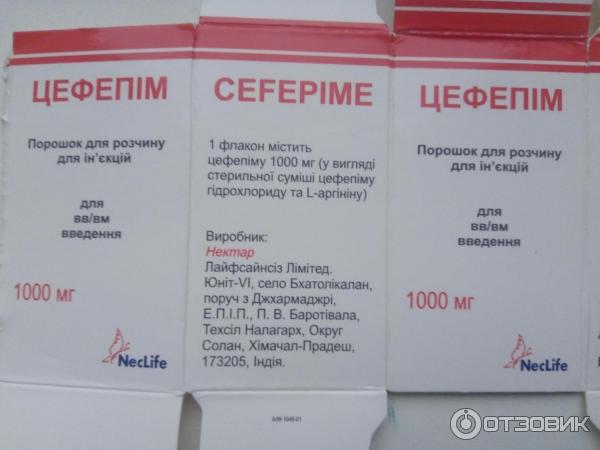 For example, if a patient exhibits a change in mental status or develops neurological signs such as seizure activity, the offending agent might be cefepime, and discontinuation or dose adjustment may be necessary. These changes are more likely to occur in patients with sepsis or renal dysfunction and the aging adult. However, cefepime can be overlooked as a possible source as it is a common medication given that is usually well tolerated.
For example, if a patient exhibits a change in mental status or develops neurological signs such as seizure activity, the offending agent might be cefepime, and discontinuation or dose adjustment may be necessary. These changes are more likely to occur in patients with sepsis or renal dysfunction and the aging adult. However, cefepime can be overlooked as a possible source as it is a common medication given that is usually well tolerated.
The clinician will decide to treat the patient with cefepime, but a consult with a pharmacist, particularly one with board certification in infectious disease, might be in order. Pharmacists can review the antibiogram and verify dosing and duration. Nursing can counsel the patient on taking the medication, answering any questions, monitoring patient compliance and therapeutic effectiveness, and reporting any concerns to the prescriber. Cefepime therapy requires the collaborative effort of an interprofessional healthcare team to include physicians, specialty-trained nurses, pharmacists, and potentially infectious disease specialists, all working together to achieve optimal patient outcomes.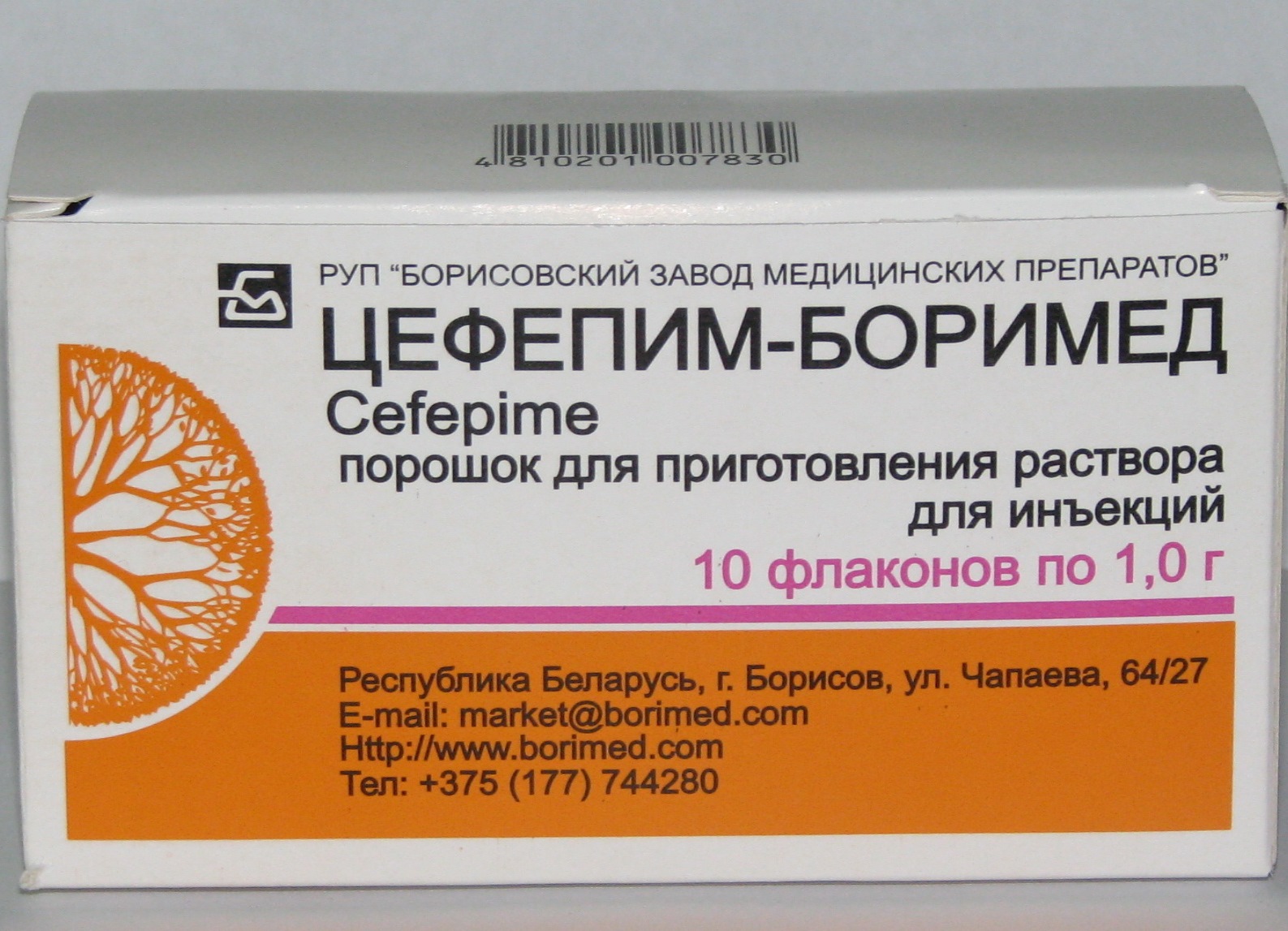 [Level 5]
[Level 5]
Review Questions
Access free multiple choice questions on this topic.
Comment on this article.
References
- 1.
Chapman TM, Perry CM. Cefepime: a review of its use in the management of hospitalized patients with pneumonia. Am J Respir Med. 2003;2(1):75-107. [PubMed: 14720024]
- 2.
Rivera CG, Narayanan PP, Patel R, Estes LL. Impact of Cefepime Susceptible-Dose-Dependent MIC for Enterobacteriaceae on Reporting and Prescribing. Antimicrob Agents Chemother. 2016 Jun;60(6):3854-5. [PMC free article: PMC4879407] [PubMed: 27067319]
- 3.
Nguyen HM, Shier KL, Graber CJ. Determining a clinical framework for use of cefepime and β-lactam/β-lactamase inhibitors in the treatment of infections caused by extended-spectrum-β-lactamase-producing Enterobacteriaceae. J Antimicrob Chemother. 2014 Apr;69(4):871-80. [PubMed: 24265230]
- 4.
Patel HB, Lusk KA, Cota JM.
 The Role of Cefepime in the Treatment of Extended-Spectrum Beta-Lactamase Infections. J Pharm Pract. 2019 Aug;32(4):458-463. [PubMed: 29166830]
The Role of Cefepime in the Treatment of Extended-Spectrum Beta-Lactamase Infections. J Pharm Pract. 2019 Aug;32(4):458-463. [PubMed: 29166830]- 5.
Walker KJ, Lee YR, Klar AR. Clinical Outcomes of Extended-Spectrum Beta-Lactamase-Producing Enterobacteriaceae Infections with Susceptibilities among Levofloxacin, Cefepime, and Carbapenems. Can J Infect Dis Med Microbiol. 2018;2018:3747521. [PMC free article: PMC5833881] [PubMed: 29670677]
- 6.
Kessler RE. Cefepime microbiologic profile and update. Pediatr Infect Dis J. 2001 Mar;20(3):331-6. [PubMed: 11303846]
- 7.
Bauer KA, West JE, O’Brien JM, Goff DA. Extended-infusion cefepime reduces mortality in patients with Pseudomonas aeruginosa infections. Antimicrob Agents Chemother. 2013 Jul;57(7):2907-12. [PMC free article: PMC3697364] [PubMed: 23571547]
- 8.
Wrenn RH, Cluck D, Kennedy L, Ohl C, Williamson JC. Extended infusion compared to standard infusion cefepime as empiric treatment of febrile neutropenia.
 J Oncol Pharm Pract. 2018 Apr;24(3):170-175. [PubMed: 28077047]
J Oncol Pharm Pract. 2018 Apr;24(3):170-175. [PubMed: 28077047]- 9.
Zhu LL, Zhou Q. Optimal infusion rate in antimicrobial therapy explosion of evidence in the last five years. Infect Drug Resist. 2018;11:1105-1117. [PMC free article: PMC6089111] [PubMed: 30127628]
- 10.
Payne LE, Gagnon DJ, Riker RR, Seder DB, Glisic EK, Morris JG, Fraser GL. Cefepime-induced neurotoxicity: a systematic review. Crit Care. 2017 Nov 14;21(1):276. [PMC free article: PMC5686900] [PubMed: 29137682]
- 11.
Deshayes S, Coquerel A, Verdon R. Neurological Adverse Effects Attributable to β-Lactam Antibiotics: A Literature Review. Drug Saf. 2017 Dec;40(12):1171-1198. [PubMed: 28755095]
- 12.
Huwyler T, Lenggenhager L, Abbas M, Ing Lorenzini K, Hughes S, Huttner B, Karmime A, Uçkay I, von Dach E, Lescuyer P, Harbarth S, Huttner A. Cefepime plasma concentrations and clinical toxicity: a retrospective cohort study. Clin Microbiol Infect.
 2017 Jul;23(7):454-459. [PubMed: 28111294]
2017 Jul;23(7):454-459. [PubMed: 28111294]- 13.
Isitan C, Ferree A, Hohler AD. Cefepime induced neurotoxicity: A case series and review of the literature. eNeurologicalSci. 2017 Sep;8:40-43. [PMC free article: PMC5730896] [PubMed: 29260037]
- 14.
Appa AA, Jain R, Rakita RM, Hakimian S, Pottinger PS. Characterizing Cefepime Neurotoxicity: A Systematic Review. Open Forum Infect Dis. 2017 Fall;4(4):ofx170. [PMC free article: PMC5639733] [PubMed: 29071284]
- 15.
Vorobeichik L, Weber EA, Tarshis J. Misconceptions Surrounding Penicillin Allergy: Implications for Anesthesiologists. Anesth Analg. 2018 Sep;127(3):642-649. [PubMed: 29757781]
- 16.
Pichichero ME, Zagursky R. Penicillin and cephalosporin allergy. Ann Allergy Asthma Immunol. 2014 May;112(5):404-12. [PubMed: 24767695]
- 17.
Mine Y, Nishida M, Goto S, Kuwahara S. Cefazolin, a new semisynthetic cephalosporin antibiotic. IV. Antigenicity of cefazolin and its cross reactivity with benzylpenicillin, ampicillin and cephaloridine.
 J Antibiot (Tokyo). 1970 Apr;23(4):195-203. [PubMed: 5429508]
J Antibiot (Tokyo). 1970 Apr;23(4):195-203. [PubMed: 5429508]- 18.
Joint Task Force on Practice Parameters; American Academy of Allergy, Asthma and Immunology; American College of Allergy, Asthma and Immunology; Joint Council of Allergy, Asthma and Immunology. Drug allergy: an updated practice parameter. Ann Allergy Asthma Immunol. 2010 Oct;105(4):259-273. [PubMed: 20934625]
- 19.
Durand-Maugard C, Lemaire-Hurtel AS, Gras-Champel V, Hary L, Maizel J, Prud’homme-Bernardy A, Andréjak C, Andréjak M. Blood and CSF monitoring of cefepime-induced neurotoxicity: nine case reports. J Antimicrob Chemother. 2012 May;67(5):1297-9. [PubMed: 22298349]
- 20.
Lamoth F, Buclin T, Pascual A, Vora S, Bolay S, Decosterd LA, Calandra T, Marchetti O. High cefepime plasma concentrations and neurological toxicity in febrile neutropenic patients with mild impairment of renal function. Antimicrob Agents Chemother. 2010 Oct;54(10):4360-7. [PMC free article: PMC2944571] [PubMed: 20625153]
- 21.

Chapuis TM, Giannoni E, Majcherczyk PA, Chioléro R, Schaller MD, Berger MM, Bolay S, Décosterd LA, Bugnon D, Moreillon P. Prospective monitoring of cefepime in intensive care unit adult patients. Crit Care. 2010;14(2):R51. [PMC free article: PMC2887166] [PubMed: 20359352]
- 22.
Endimiani A, Perez F, Bonomo RA. Cefepime: a reappraisal in an era of increasing antimicrobial resistance. Expert Rev Anti Infect Ther. 2008 Dec;6(6):805-24. [PMC free article: PMC2633657] [PubMed: 19053894]
Disclosure: Audrey O’Connor declares no relevant financial relationships with ineligible companies.
Disclosure: Michael Lopez declares no relevant financial relationships with ineligible companies.
Disclosure: Ambika Eranki declares no relevant financial relationships with ineligible companies.
antibacterial activity and clinical efficacy in obstetrics and gynecology
Actual topic “BCPZ on guard of the health of Ukrainian patients” Main page of topics
02. 07.2019
07.2019
PDF article
Genital infections, which include the entire spectrum of inflammatory diseases of the reproductive tract, are the most common reason women seek help from a gynecologist. These are endometritis, salpingitis, tubo-ovarian abscess, pelvic peritonitis. Due to the wide variety of pathogens that cause inflammatory processes in the female genital organs, the choice of an effective antibiotic is crucial.
Inflammatory diseases of the genitourinary system are characterized by polymicrobial etiology with a predominance of opportunistic microflora, which is part of the normal microflora of the vagina and sexually transmitted pathogens. Schemes of antibiotic therapy for infectious diseases in obstetric and gynecological practice should empirically ensure the elimination of a wide range of microorganisms: gonococci, chlamydia, non-spore-forming anaerobes, gram-positive cocci, enterobacteria.
The features of modern obstetrics and gynecology are a change in the contingent of pregnant women and women in childbirth (an increase in the number of women with severe extragenital pathology using IVF and hormonal therapy), a high frequency of caesarean sections, the widespread use of antibacterial drugs for preventive and therapeutic purposes, leading to the formation of antibiotic-resistant strains in hospitals microorganisms [9, 10].
When choosing an antibiotic, preference is given to drugs that create high bactericidal concentrations at the site of inflammation, have a sparing effect on the intestinal and vaginal microflora, as well as a half-life that ensures the minimum frequency of administration. Violation of the normal microflora of the vagina during antibiotic therapy contributes to the colonization of the vagina by enterobacteria and fungi, which aggravates the course of the underlying disease.
The high efficiency of III generation cephalosporins suggests their use in the treatment of severe infections of the genital tract, septicemia, bacteremia, and for the prevention of infectious complications after surgical interventions. Thus, when studying the effectiveness of ceftazidime, a third-generation cephalosporin antibiotic that disrupts the biosynthesis of the bacterial cell wall, the following results were obtained.
Thus, when studying the effectiveness of ceftazidime, a third-generation cephalosporin antibiotic that disrupts the biosynthesis of the bacterial cell wall, the following results were obtained.
After a single drip of 1 g over 30-60 minutes, the absorption and penetration of ceftazidime into the tissues of the pelvic cavity were high. The maximum level (76.4 µg/ml) was reached in the serum of the uterine artery 8 minutes after administration. At the same time, the maximum concentrations varied from 46.8 to 62.1 µg/g 20 minutes after administration, and the therapeutic concentration of the drug was 2.1 and 7.7 µg/g 5 hours and 40 minutes after administration, respectively. Tissue concentration curves corresponded to serum levels. Concentrations in retroperitoneal exudate were determined after intravenous drip infusion of 1 g. Peak levels varied from 26 to 32 µg/ml after 30 minutes of administration, and the level of 8.53 µg/ml was maintained even after 6 hours. g of ceftazidime was observed in gynecological and obstetric diseases such as intrauterine infection, infection of the external genital organs, as well as pyelonephritis. Ceftazidime was effective in 13 out of 14 cases (effectiveness ratio -92.9%. As for side effects, dyspeptic disorders such as stomach discomfort and vomiting were observed in only one case.
Ceftazidime was effective in 13 out of 14 cases (effectiveness ratio -92.9%. As for side effects, dyspeptic disorders such as stomach discomfort and vomiting were observed in only one case.
The clinical effect and safety of ceftazidime in obstetrics and gynecology were studied in 7 cases of intrauterine infections, in 8 cases of parametritis, in 1 case of abscessed bartholinitis and in 4 cases of intra-abdominal infections. A total of 20 cases were analyzed. Ceftazidime was administered at a dose of 2 g/day by intravenous drip infusion for 4-9days depending on the severity of the disease. The results showed the effectiveness of ceftazidime in 13 out of 20 cases, and especially in intrauterine infections, where it was effective in all cases. Efficacy was somewhat lower with parametritis and kidney infection. During treatment with ceftazidime, neither adverse reactions nor pathological laboratory parameters were observed.
Cefepime is a fourth-generation cephalosporin antibiotic. Its mechanism of action is to inhibit the synthesis of the bacterial cell membrane, which is why it is classified as a broad-spectrum bactericidal drug, covering both gram-positive and gram-negative bacteria. It effectively fights pathogenic microbes such as Pseudomonas aeruginosa, Staphylococcus aureus, Streptococcus pneumoniae and Enterobacteriaceae with multidrug resistance. Unlike third-generation cephalosporins, it is resistant to plasmid- and chromosome-mediated β-lactamases due to the expansion of its antibacterial spectrum. Cefepime has a low affinity for β-lactamases, it is less sensitive to hydrolysis by these enzymes compared to other generations of cephalosporins and some other β-lactam antibiotics. Cefepime is more stable to SHV-type β-lactamases produced by Enterobacteriaceae , and higher activity against strains producing these enzymes than other cephalosporins (cefotaxime, ceftazidime, ceftriaxone) [1-3].
Its mechanism of action is to inhibit the synthesis of the bacterial cell membrane, which is why it is classified as a broad-spectrum bactericidal drug, covering both gram-positive and gram-negative bacteria. It effectively fights pathogenic microbes such as Pseudomonas aeruginosa, Staphylococcus aureus, Streptococcus pneumoniae and Enterobacteriaceae with multidrug resistance. Unlike third-generation cephalosporins, it is resistant to plasmid- and chromosome-mediated β-lactamases due to the expansion of its antibacterial spectrum. Cefepime has a low affinity for β-lactamases, it is less sensitive to hydrolysis by these enzymes compared to other generations of cephalosporins and some other β-lactam antibiotics. Cefepime is more stable to SHV-type β-lactamases produced by Enterobacteriaceae , and higher activity against strains producing these enzymes than other cephalosporins (cefotaxime, ceftazidime, ceftriaxone) [1-3].
The most important properties of cefepime include: a wide range of antimicrobial activity (compared to drugs of previous generations), stability to extended spectrum β-lactamases, activity against most gram-negative bacteria, good penetration of the drug into tissues, maintaining high concentrations for 12 hours, convenient dosage, good tolerability and lack of toxic effect, proven efficacy in comparative clinical studies. Such properties of cefepime explain its high clinical efficacy both in monotherapy and in combination with other antibacterial drugs for the treatment of severe infections of the pelvic organs.
Such properties of cefepime explain its high clinical efficacy both in monotherapy and in combination with other antibacterial drugs for the treatment of severe infections of the pelvic organs.
Cefepime has been successfully used in the treatment of various obstetric and gynecological infections, as evidenced by clinical trial data. When prescribing cefepime 1 g 2 times a day for 3-10 days, 19 women with genital infections (10 with intrauterine infection, 2 with pelvioperitonitis, 2 with parametritis, 2 with Bartholin’s abscess, 3 – with other infections), the clinical effect was observed in all cases, bacteriological – in 81% [4]. The clinical efficacy of cefepime in the treatment of 11 women with gynecological infections (adnexitis, pelvioperitonitis, etc.) was 100%; elimination – 8 out of 11 isolated strains of microorganisms [5].
When analyzing the results of 7 studies conducted in Japan and covering 69 patients with obstetric-gynecological infection, it was found that the clinical effect of cefepim ranges from 75 to 100%, averaging 93% [6].
The duration of antibiotic use is determined by the nature and severity of the disease. Unreasonably long antibiotic therapy increases the frequency of side effects of drugs (development of dysbacteriosis, antibiotic-associated diarrhea) [11]. In most cases, antibiotics can be canceled 2-3 days after the temperature returns to normal. If within 48-72 hours after the start of antibiotic therapy there is no positive dynamics of the disease, the issue of changing antibacterial drugs should be resolved.
The efficacy and safety of cefepime have been studied in studies involving patients hospitalized with complicated intra-abdominal infections. The total number of observed was 323 people. All of them took part in a prospective, randomized, multicenter, double-blind study comparing the efficacy of a combination of cefepime (2 g every 12 hours) with intravenous administration of metronidazole (500 mg every 6 hours) (n=164) and imipenem/cilastatin (500 mg every 6 hours) (n=159) with a maximum duration of treatment of 14 days. The study results showed that the clinical cure rate in the cefepime + metronidazole group was significantly higher (88%) than in patients treated with imipenem/cilastatin (76%) (p=0.02). Eradication of pathogens was noted in a larger number (p=0.01) of patients treated with cefepime in combination with metronidazole (89%) than in the group receiving imipenem/cilastatin (76%) [7].
The study results showed that the clinical cure rate in the cefepime + metronidazole group was significantly higher (88%) than in patients treated with imipenem/cilastatin (76%) (p=0.02). Eradication of pathogens was noted in a larger number (p=0.01) of patients treated with cefepime in combination with metronidazole (89%) than in the group receiving imipenem/cilastatin (76%) [7].
The combination of antibacterial drugs is indicated in the treatment of diseases of polymicrobial etiology in order to reduce the development of antibiotic resistance in certain types of bacteria, to reduce the dose of the drugs used and their side effects. However, it should be borne in mind that combination therapy is usually less cost-effective than monotherapy.
Third-generation cephalosporins are also the drugs of choice for perioperative antibiotic prophylaxis. It is performed during surgical interventions with laparotomic, laparoscopic and transvaginal accesses, with caesarean section, medical abortions.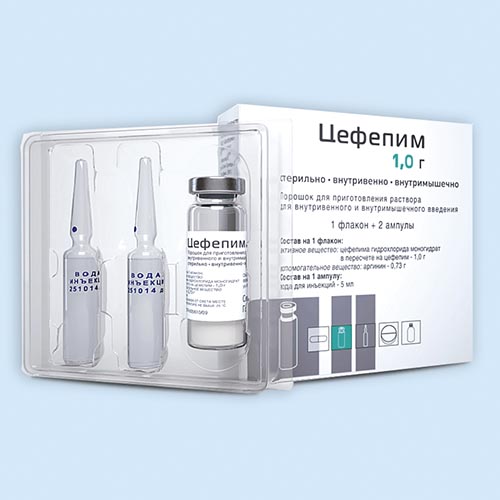 It consists in the introduction of one therapeutic dose of a broad-spectrum antibacterial drug intravenously 30 minutes before the start of the operation or after clamping the umbilical cord during caesarean section. If necessary (emergency surgical interventions in unexamined patients, caesarean section after a long anhydrous period), the administration of the antibiotic is repeated intramuscularly 8 and 16 hours after the first injection.
It consists in the introduction of one therapeutic dose of a broad-spectrum antibacterial drug intravenously 30 minutes before the start of the operation or after clamping the umbilical cord during caesarean section. If necessary (emergency surgical interventions in unexamined patients, caesarean section after a long anhydrous period), the administration of the antibiotic is repeated intramuscularly 8 and 16 hours after the first injection.
Thus, ceftazidime and cefepime are highly effective broad-spectrum antimicrobials that cause a minimum number of side effects, which allows them to be recommended for the treatment of various types of infectious diseases of the pelvic organs. These antibiotics demonstrate high clinical efficacy even in the treatment of severe mixed infections in intensive care units and intensive care units.
Literature
1. Yakovlev S.V. Cefepime is a IV generation cephalosporin antibiotic // Antibiotics and Chemotherapy. – 1999.– T. 44, No. 7.–S. 32-37.
– 1999.– T. 44, No. 7.–S. 32-37.
2. Barradell L.B., Bryson H.M. Cefepime. A review of its antibacterial activity, pharmacokinetic properties and therapeutic use // Drugs. – 1994.–Vol. 47.–P. 471-505.
3. Jones R.N. Impact of changing pathogens and antimicrobial susceptibility patterns in the treatment of serious infections in hospitalized patients // Am. J. Med. – 1996.–Vol. 100, Suppl. 6A. –P. 3-12.
4. Cho N., Fukunaga K., Kunii K. et al. Bacteriological, pharmacokinetic and clinical studies on cefepime in obstetrics and gynecology // Chemotherapy Tokyo. – 1991.–Vol. 39, Suppl. 2.–P. 342-349.
5. Kitagawa M., Ochial K., Sekine T. et al. Clinical study of cefepime for infection of female genital organs // Ibid. –P. 544-546.
6. Chemotherapy Tokyo. – 1991.–Vol. 39, Suppl. 2.
7. Endimiani A., Pelez F., Bonomo R.A. Ceferime: area appraisal in an era of increasing antimicrobial resistance. Expert Rev Anti infection Ther. 2008;6(6):805-824.
8. Practical guide to anti-infective chemotherapy / Ed.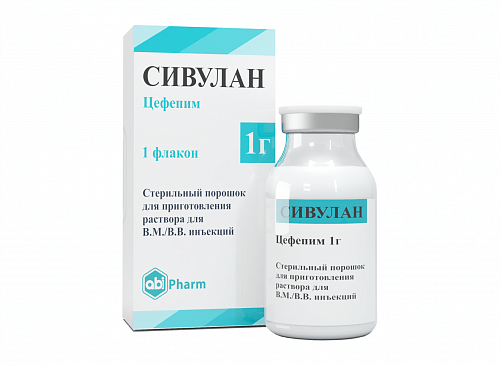 L.S. Strachunsky, Yu.B. Belousova, S.N. Kozlov. Publishing House of NIIAH SGMA, 2007.– 384 p.
L.S. Strachunsky, Yu.B. Belousova, S.N. Kozlov. Publishing House of NIIAH SGMA, 2007.– 384 p.
9. Clinical guidelines. Obstetrics and Gynecology, 4th ed., revised. and additional / Ed. V.N. Serov, G.T. Dry. M.: GEOTAR-Media, 2014. – 1024 p.
10. Kiser C., Nawab U., McKenna K., Aghai Z.H. Role of guidelines on length of therapy in chorioamnionitis and neonatal sepsis // Pediatrics. – 2014.–Vol. 133(6). –P. 992-998.
11. Kozlov R.S., Golub A.V. Strategy for the use of antimicrobials as an attempt at a renaissance of antibiotics // Clinical Microbiology and Antimicrobial Chemotherapy. – 2011. – No. 13 (4). – S. 322-334.
Prepared by Irina Duka
Thematic issue “Gynecology, Obstetrics, Reproductology” No. 1 (33), March 2019
- Current topic:
- Actual topic “BHFZ on guard of the health of Ukrainian patients”
- Number:
- Thematic issue “Gynecology, Obstetrics, Reproductology” No.
 1 (33), March 2019
1 (33), March 2019
Cefepime with taniborbactam: a new combination antibiotic actam).
Cefepime with taniborbactam has completed a pivotal clinical trial for the treatment of complicated urinary tract infections (cUTI), demonstrating superior efficacy compared to standard therapy meropenem.
The new drug application is scheduled to be submitted to the US Food and Drug Administration (FDA) later this year. If the regulator approves, the new antibiotic will hit the market around mid-2023.
In September 2018, Venatorex granted Everest Medicines II a license to develop, register and commercialize cefepime with taniborbactam in China, South Korea and Southeast Asia. For this, up to $114 million will be received (upfront and as the project progresses), as well as royalties from the sale of the finished drug.
In April 2020, Venatorex agreed with the Global Antibiotic Research and Development Partnership (GARDP) to distribute affordable cefepime with taniborbactam to low and lower middle income countries. GARDP is a non-profit organization that develops new treatments for drug-resistant infections that pose the greatest threat to health. GARDP was established in 2016 by the World Health Organization (WHO) and the Neglected Diseases Drugs Initiative (DNDi).
GARDP is a non-profit organization that develops new treatments for drug-resistant infections that pose the greatest threat to health. GARDP was established in 2016 by the World Health Organization (WHO) and the Neglected Diseases Drugs Initiative (DNDi).
Cefepime with taniborbactam: clinical trial
CERTAIN-1 (NCT03840148) phase III clinical trial (randomized, double-blind, with active comparator, multicenter, international) invited adult patients (n=661) with complicated urinary infections excretory tracts (including acute pyelonephritis) and pyuria.
Participants were given either cefepime with taniborbactam (2.5 g) or meropenem (1 g) intravenously every 8 hours for 7 days (or up to 14 days in case of bacteremia).
The primary endpoint of treatment efficacy was stated as a composite measure combining microbiological eradication (titer of any Gram-negative pathogen detected at baseline fell below 10 3 cfu/mL) and symptomatic clinical success (resolution of symptoms or their return to baseline). before the disease, while the patient remains alive and does not receive additional antibiotic therapy), – at the date of control of cure (period 19-23 days).
before the disease, while the patient remains alive and does not receive additional antibiotic therapy), – at the date of control of cure (period 19-23 days).
The cefepime plus taniborbactam group demonstrated statistically significant non-inferiority compared with the meropenem group, with 70.0% of patients reaching the primary endpoint versus 58.0% in the control group (difference of 11.9% [95% CI: 2, 4–21.6]).
However, the superiority of experimental antibacterial treatment over standard therapy persisted at later clinical evaluations (28–35 days).
The incidence of adverse events that occurred during treatment was 35.5% in the cefepime with taniborbactam group – vs. 290% in the meropenem group. Serious adverse events were registered for 2.0% and 1.8% of subjects, respectively. Adverse events resulted in treatment discontinuation in 3.0% and 0.9% of participants.
Cefepime with taniborbactam: mechanism of action
The beta-lactam antibiotic cefepime (cefepime), a fourth-generation cephalosporin, has been widely used for over two decades to control susceptible gram-negative and gram-positive bacteria.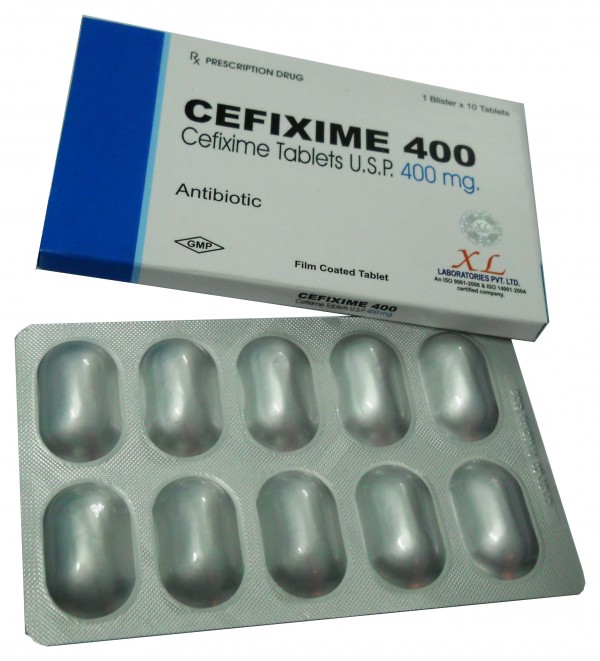 Cefepime acts bactericidal, disrupting the synthesis of the cell wall of microorganisms. Most strains of bacteria Enterococcus spp. , including Enterococcus faecalis , methicillin-resistant staphylococci, Stenotrophomonas maltophilia (previously known as X anthomonas maltophilia and Pseudomonas maltophilia ), Clostridium difficile are not susceptible to cefepime.
Cefepime acts bactericidal, disrupting the synthesis of the cell wall of microorganisms. Most strains of bacteria Enterococcus spp. , including Enterococcus faecalis , methicillin-resistant staphylococci, Stenotrophomonas maltophilia (previously known as X anthomonas maltophilia and Pseudomonas maltophilia ), Clostridium difficile are not susceptible to cefepime.
The addition of taniborbactam (taniborbactam, VNRX-5133), a serine and metallo-beta-lactamase inhibitor, to cefepime is an option for the treatment of patients with serious bacterial infections caused by difficult-to-treat drug-resistant gram-negative bacteria, primarily carbapen-resistant Enterobacterales (CRE) and carbapenem-resistant Pseudomonas aeruginosa (CRPA). Many of these microorganisms also exhibit multidrug resistance to aminoglycosides, quinolones, and beta-lactams through the expression of class A, B, C, and D beta-lactamases. AmpC lactamases and/or simultaneously producing ESBL and AmpC, KPC, OXA, NDM, VIM beta-lactamases. Taniborbaktam copes with all of the above.
Taniborbaktam copes with all of the above.
The broad spectrum antibacterial activity of cefepime with taniborbactam is particularly sought after by high-risk patients for whom any delay in effective treatment leads to suboptimal clinical outcomes.
Cefepime with taniborbactam will also find use in the treatment of infections caused by bioterrorism pathogens such as Burkholderia spp. and Salmonella spp. , and polymicrobial infections caused by both gram-negative and gram-positive bacteria.
The development of the combination of cefepime with taniborbactam is partially sponsored by the Biomedical Advanced Research and Development Authority (BARDA), part of the Office of the Assistant Secretary for Preparedness and Response (ASPR) of the US Department of Health and Human Services (HSS)
Cefepime with taniborbactam: what’s next
The Phase III CERTAIN-2 clinical trial to begin in 2022 will evaluate the therapeutic efficacy of cefepime with taniborbactam in the treatment of hospital-acquired bacterial pneumonia (HABP) and ventilator-associated bacterial pneumonia (VABP).
Venatorex and new antibiotics
In addition to cefepime with taniborbactam, Venatorex is developing an oral combination antibiotic that combines ceftibuten, a third-generation cephalosporin, and VNRX-7145, a broad-spectrum beta-lactamase inhibitor on based on boronic acid . VNRX-7145 restores the antibacterial activity of ceftibuten against Enterobacterales strains expressing ESBL and serine carbapenemase: class A ESBL, class C cephalosporinase, and class A and D carbapenemase (KPC and OXA-48).
The novelty is focused on the treatment of infections caused by multidrug-resistant gram-negative bacteria that are resistant to standard oral and intravenous antibiotics, including fluoroquinolones, cephalosporins and carbapenems. In 2022, a phase III clinical trial will be conducted that will test ceftibuten with VNRX-7145 in the treatment of complicated urinary tract infections.
Venatorex is also pursuing a new class of non-beta-lactam molecules that kill bacteria through the same selective mechanism as beta-lactams—by blocking cell wall synthesis by binding to bacterial penicillin-binding proteins (PBPs).


 The Role of Cefepime in the Treatment of Extended-Spectrum Beta-Lactamase Infections. J Pharm Pract. 2019 Aug;32(4):458-463. [PubMed: 29166830]
The Role of Cefepime in the Treatment of Extended-Spectrum Beta-Lactamase Infections. J Pharm Pract. 2019 Aug;32(4):458-463. [PubMed: 29166830] J Oncol Pharm Pract. 2018 Apr;24(3):170-175. [PubMed: 28077047]
J Oncol Pharm Pract. 2018 Apr;24(3):170-175. [PubMed: 28077047] 2017 Jul;23(7):454-459. [PubMed: 28111294]
2017 Jul;23(7):454-459. [PubMed: 28111294] J Antibiot (Tokyo). 1970 Apr;23(4):195-203. [PubMed: 5429508]
J Antibiot (Tokyo). 1970 Apr;23(4):195-203. [PubMed: 5429508]
 The Role of Cefepime in the Treatment of Extended-Spectrum Beta-Lactamase Infections. J Pharm Pract. 2019 Aug;32(4):458-463. [PubMed: 29166830]
The Role of Cefepime in the Treatment of Extended-Spectrum Beta-Lactamase Infections. J Pharm Pract. 2019 Aug;32(4):458-463. [PubMed: 29166830] J Oncol Pharm Pract. 2018 Apr;24(3):170-175. [PubMed: 28077047]
J Oncol Pharm Pract. 2018 Apr;24(3):170-175. [PubMed: 28077047] 2017 Jul;23(7):454-459. [PubMed: 28111294]
2017 Jul;23(7):454-459. [PubMed: 28111294]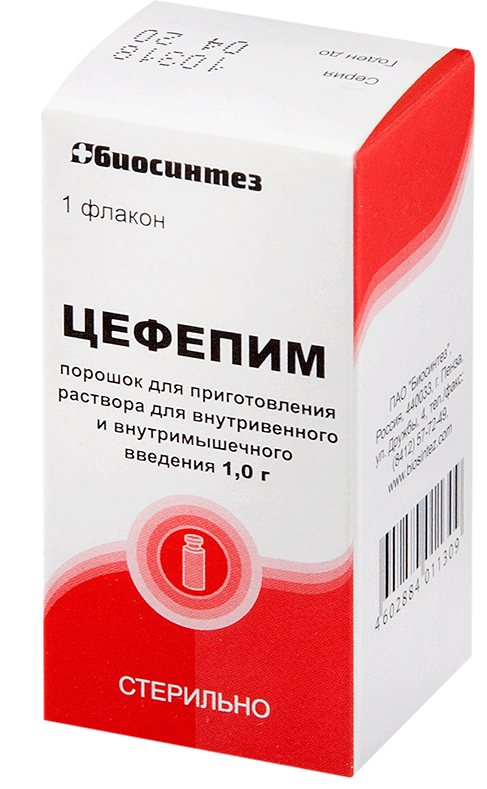 J Antibiot (Tokyo). 1970 Apr;23(4):195-203. [PubMed: 5429508]
J Antibiot (Tokyo). 1970 Apr;23(4):195-203. [PubMed: 5429508]
 1 (33), March 2019
1 (33), March 2019